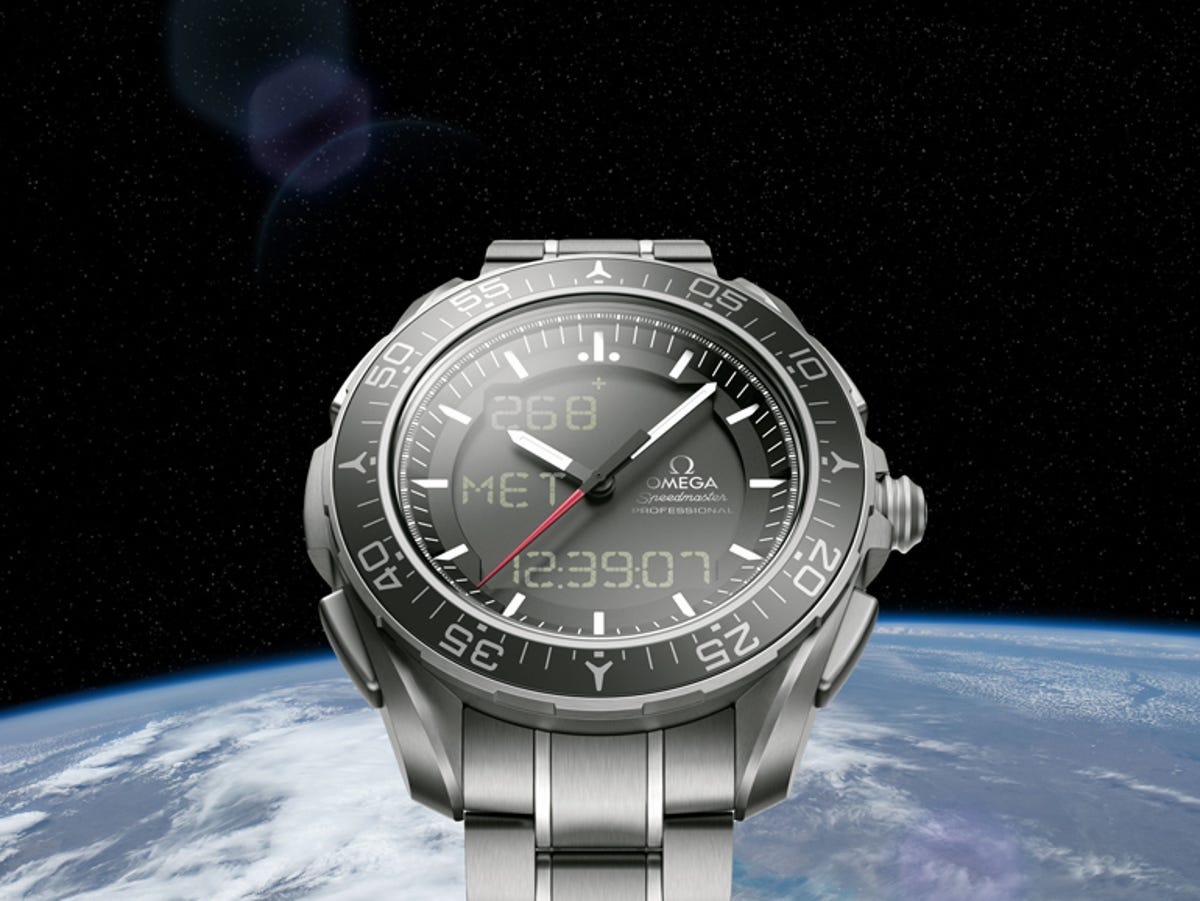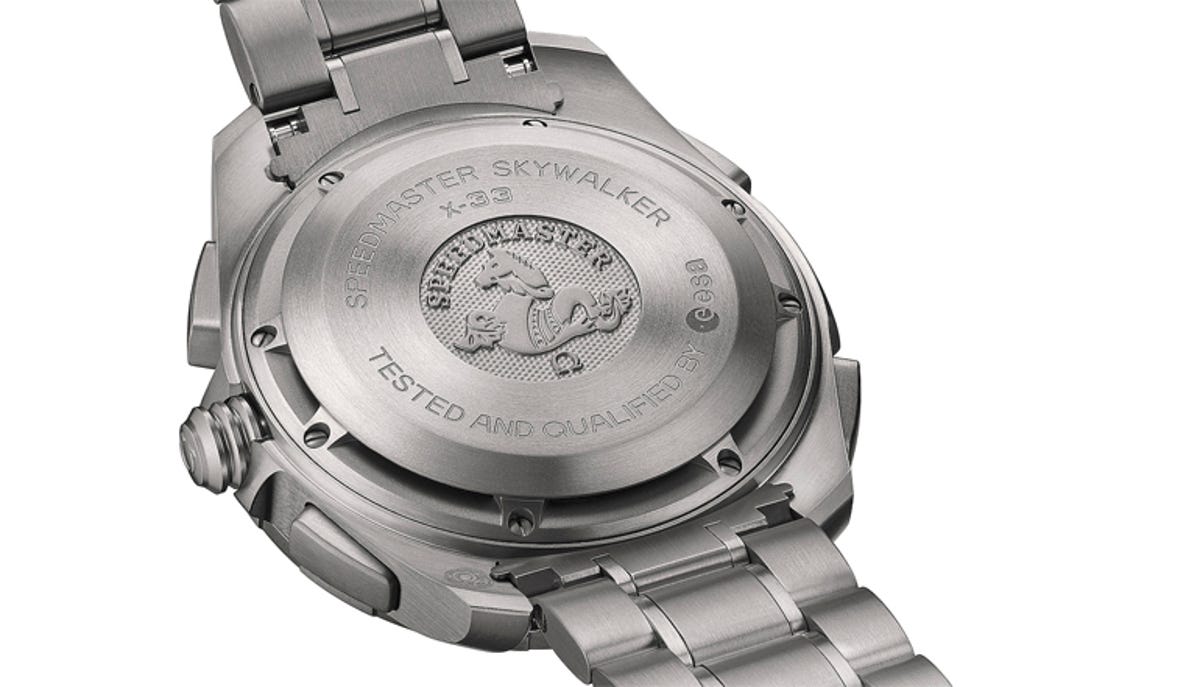
Omega
Since 1965, when the Omega Speedmaster was NASA-certified for space travel, the watchmaker has served as the official timepiece supplier to the final frontier. On July 21, 1969, the Omega Speedmaster was the first watch on the moon. Its history spans over half a century of space travel — continued in the watch’s latest edition, the Speedmaster Skywalker X-33 — predecessor to the Speedmaster Professional X-33.


Omega
Omega has had a strong relationship with astronauts in the development of the various iterations of the Speedmaster — and this latest is no exception. It includes a feature developed and patented by ESA astronaut Jean-François Clervoy, who has spent a total of 675 hours in space.
During his space missions, Clervoy realised it would have been helpful if his wristwatch helped him keep track of missions. The Speedmaster Skywalker X-33, therefore, includes features to this end: mission elapsed time (MET) and phase elapsed time (PET).
These are timers that allow the wearer to set a date and time in the past or future, with a timer that counts how much time has elapsed or remains. Combined with a number of different alarms, each with different tones, this creates a useful tool for tracking tasks and missions.
“We are delighted that our friends at the European Space Agency have tested and qualified the Speedmaster Skywalker X-33 for all its piloted missions, which is a natural extension of our long relationship with NASA and its space programme,” said Omega president Stephen Urquhart.
“ESA’s abilities and ambitions are extraordinary, as demonstrated by their recent high-profile successes with Rosetta and Philae, and we are proud that their name and endorsement grace the back of this iconic chronograph.”
The watch has 12 functions overall: hour, minute and seconds of up to three different time zones; a chronograph; a perpetual calendar; a digital LCD as well as an analogue display with Super-Luminova-Coated hands and hour markings for easy legibility in the dark; and the ability to disengage the hands for easier viewing of the digital display underneath.
The whole package has been wrapped in a grade 2 titanium case and bracelet for durability, and is powered by a multi-functional quartz chronograph movement, the Omega calibre 5619.


Omega
It’s also been rigorously tested for space conditions to ensure it can survive anything an astronaut can, at the ESA’s ESTEC facility in Noordwijk, the Netherlands. This included being subjected to a centrifuge, where it endured pressure seven times Earth’s gravity, such as an astronaut might experience upon re-entry; and surviving the facility’s shaker simulator, which simulates the vibration of a space craft during launch.
Other tests included extreme temperature testing in a vacuum chamber — from -45°C to +75°C — and being bombarded with radiation under the supervision of French aerospace lab ONERA DESP. Each watch was then reviewed for functionality.
“I am excited and proud to see my invention implemented in a high-precision wristwatch,” Clervoy said. “Having Omega in this partnership with ESA, based on our patent, will allow all ESA astronauts to benefit from its innovative functions.”
The Speedmaster Skywalker X-33 will be available for a cool $5,900. You can check out its functions in more detail in a free iOS app created especially for the watch.




